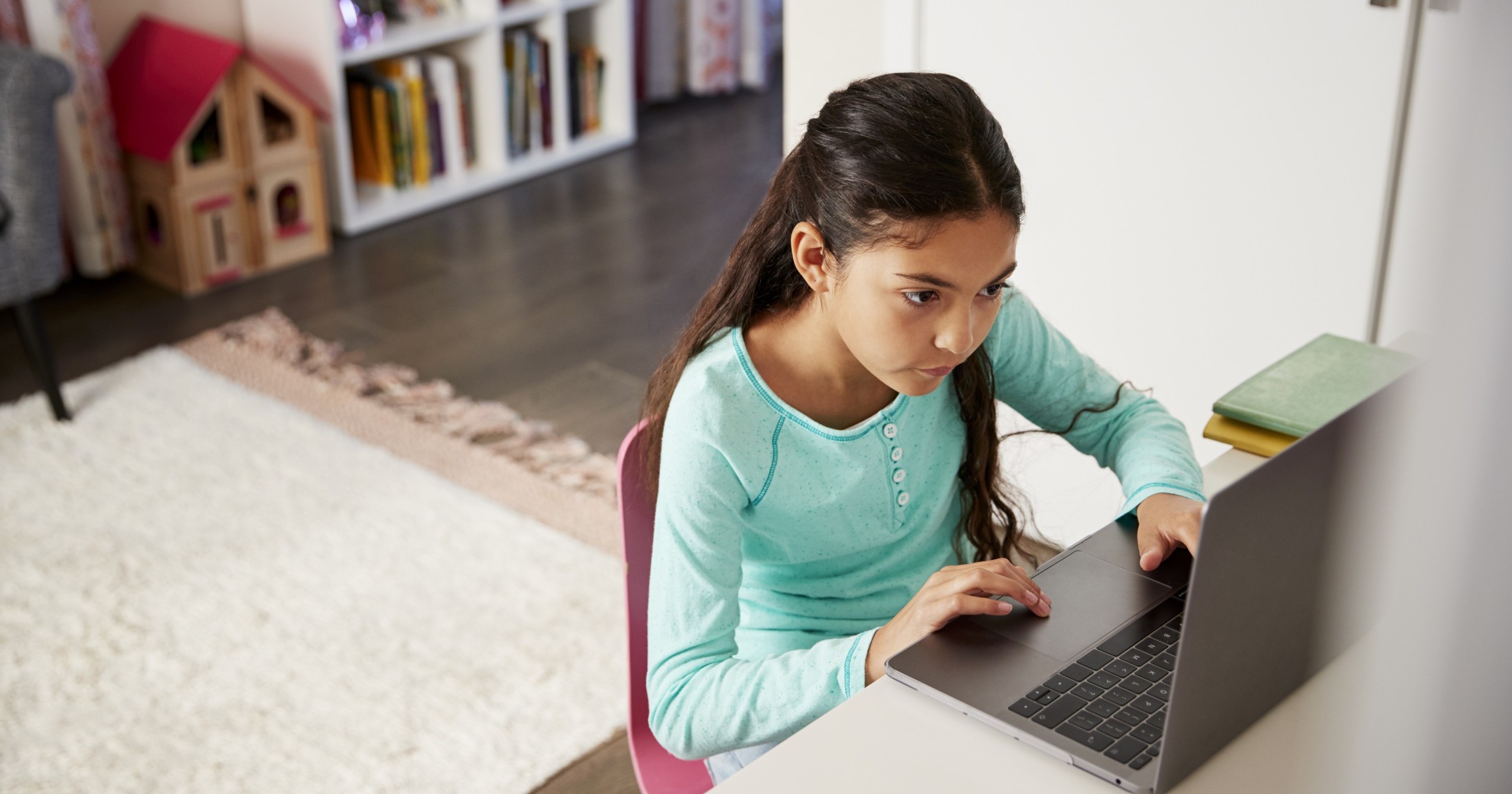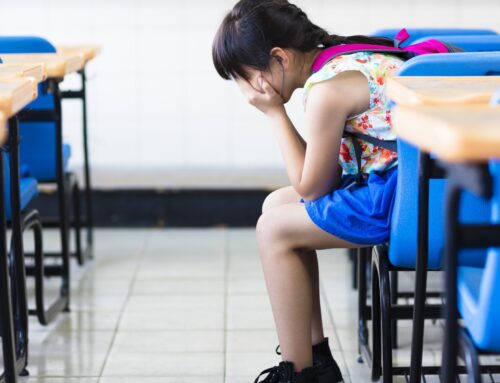
The internet and technology are tools with an incomprehensible number of uses. From homemaking to corporate America, these marvels, that exploded in use and variety in the latter half of the 20th century, have changed nearly all aspects of everyday life.
In education, these advances have been undeniably noticeable.
I was in high school in the mid-2000s. My family still had dial-up internet, one (family) computer, and our “personal devices,” which were walkman CD players. As a homeschooler, my mother suggested that I participate in our local community college’s “dual enrollment” program. I could continue my high school education and earn college credits at the same time.
We had one family car, my father worked outside the home, and I was the oldest of 7 children. My parents felt that dual enrollment was an important option for me to explore, but the logistics of getting me to and from class were a bit tricky.
Imagine our delight when we learned that the college offered online courses. This was an attractive solution to our problem and enabled me to begin college without causing transportation issues for my family.
I swiftly signed up and not so swiftly labored through with our slow internet, AOL email account, and the numerous phone calls disrupting my landline-based online efforts. But, at the end of the year, I had three courses under my belt—all thanks to the technological advancements of the previous two decades.
Since my high school days, technology has taken broad steps in surprising and awe-inspiring directions. Teachers and students face a new world in the 21st century, and in the post-Covid era, this is truer than ever.
Education and Technology
While virtual learning was already marginally utilized by primary education students and teachers for a decade or more, the Covid-19 pandemic propelled online schooling unexpectedly into the limelight. No longer an outlier, virtual learning became the primary education method for an entire year of academia.
Most schools were unprepared and ill-equipped for the change, resulting in a few chaotic and frustrating months. Innovators jumped into action to give technology and protocols the fast-paced upgrade they needed to meet the demand. Teachers, administrators, and parents fought to discover the most effective ways to teach America’s children in an unprecedented time.
The result? The face of education changed forever. A new door has been flung wide open and is unlikely to be shut again.
What to Consider
With virtual learning an undeniable part of our world now, the next step is analyzing the process. It’s here to stay, so what have we learned about virtual learning, its pros and cons, and its success and failures?
Overall, virtual learning saved thousands of students from wasting nearly two years of their academic lives and, in this way, can be considered a success. On the other hand, the US Department of Education (DoE) explains that virtual learning may not be an optimal choice long term.
“Abrupt shifts to remote learning over the past two school years have affected students, negatively impacting their social, emotional, and mental well-being and academic achievement.” Expounding on that statement, the DoE notes, “…Data collected before and during the COVID-19 pandemic have shown that in-person learning, on the whole, leads to better academic outcomes, greater levels of student engagement, higher rates of attendance, and better social and emotional well-being…when compared to remote learning.”
“Abrupt shifts to remote learning”—admittedly, the change from physical to virtual classrooms was abrupt and chaotic. Some educators wonder if the data would look different if the change was more effectively handled.
“When the COVID-19 pandemic began, digital learning tools became a critical need overnight,” explains James Brauer of The Gazette. “In a recent meeting with online educators, some of my colleagues expressed how often they had heard in recent months the sweeping generalization that full-time online education does not work. Dismissal of this learning model is disappointing and is a disservice to students, especially because I’ve seen firsthand so much evidence to the contrary.”
Regardless of its rapid rise to widespread use, virtual learning has pros and cons to consider as we move forward in our post-pandemic world. Let’s examine just a few of the advantages and disadvantages of this new education method.
Flexibility
Obviously, one of the most significant advantages of virtual learning is the flexibility it offers. Instead of being tied to a physical classroom, students and teachers can work from almost anywhere, at nearly any time. This aspect greatly benefits students, many of whom work better outside the traditional school structure.
Online Business School notes that with virtual learning, students control their own schedules and can use this to their best advantage. “This control not only allows them to co-ordinate their education around their commitments but ensures that they are learning at the best time…Flexible learning allows the student to decipher when and how they will learn by tailoring their course to their own capabilities. This ultimately leads to them retaining information and producing better results.”
The flexibility of virtual learning creates opportunities for students in literally thousands of ways. A flexible school schedule opens doors everywhere, from part-time jobs to attending a trade school during the workday, to family functions, or working on mental and emotional health.
Isolation
The downside of the flexibility concept is a lower level of socialization and human connection. Because the student is tied to screens for education, they are in a vacuum. If the child is older, they may not have family members at home during the day. Lack of human connection and being alone too much have a direct link to many problems.
Madeleine Shaver is a therapist from Savannah, Georgia. She’s seen a considerable uptick in concerning conditions and behaviors from children of all ages due to isolation during the pandemic. When interviewed by the Savannah Morning News, Shaver noted, “The absence of social stimulation can breed restlessness, depression, and anxiety. We take for granted the importance of the routine of going to your school building, sitting in your desk, hearing the bell, seeing your teacher in the same room… all of this plays a vital role in learning, skill development, and even emotional stability.”
On the flip side of this issue, students can work without the distractions that a conventional school setting often presents. Peer pressure, bullies, schoolroom distractions, and other disadvantages may all melt away.
Time Management
Because virtual learning is flexible by nature, students must understand and master time management. No predetermined factors, like teachers or a pre-established schedule, guide them to do what they need to do. Both a pro and con, this aspect of virtual learning is something to consider.
Time management skills will be a lifetime asset for those who learn how to maneuver their schedule effectively. Some students thrive on this challenge, while others aren’t quite ready. Without imposed structure, these kids will fall behind and become frustrated.
Education Week examines the issue of distance learning and time management. As they point out, some students need the structure of the schoolroom setting. “Students who were successful time managers in person were often successful because of the scaffolding teachers and schools provided. When those supports—bells, peer modeling, teacher reminders, mandated routines, staff check-ins, and the like—were removed…students who had been able to function successfully began to fall apart. And students who were struggling with time management before sometimes had extra difficulty.”
Parents can help their students work on achieving success. Unfortunately, some children don’t have an involved parent available to teach them in this area. Kids who struggle with time management and don’t have someone at home to teach them don’t do well with virtual learning.
The Learning Experience
Virtual learning allows for a customized educational experience. The conventional classroom can be challenging for many students, and virtual learning eliminates many of these problems. Students and teachers alike can create their own environment to accomplish their goals and maximize their opportunities. Technology offers advanced help, specialized options, and the chance to thoroughly understand a concept before moving on.
“Using virtual video chatting platforms, you can often record lessons and watch them later if repetition could help your learning,” Indeed notes. “You can also use features like subtitles or volume control to customize your learning experience.”
The education experience takes on a new and exciting outlook when technology is properly used to teach. There are nearly limitless possibilities for creating a stimulating, helpful, and effective virtual learning environment.
Screen Time
Children of all ages are exposed to a tremendous amount of screen time through virtual learning, and this is a primary concern of parents and educators alike. EdSource sees this trend and notes, “After years of being warned by child development experts that limiting screen time is one of the keys to raising healthy, well-adjusted children in the digital age, parents are now being forced to ride herd on children for long days of Zoom school and online homework.”
Technology and remote learning have given millions of students a chance at education throughout the long months of lockdown, and it’s not unreasonable to expect a negative impact on young minds from overexposure to screens. Some parents accept the inevitable and hope for the best, while others actively seek to counteract the effects of hours in front of the blue light. Even teachers are concerned and exploring proactive measures to fix what they can.
“A massive review of research on screen time…was a tart reminder of the risks,” Education Week states while exploring solutions for teachers, “…But these concerns are colliding with reality. Many teachers trying to manage their students’—and their own—screen use are caught in a bind if their districts require hefty doses of logged-on school time.”
It’s a puzzle that doesn’t have an easy solution at hand.
An Excellent Approach With Downsides
Virtual learning has established itself as a significant player in the education game, and it’s doubtful that it will recede into the background again. The challenge for educators and families is to maximize the benefits while discovering ways to mitigate the negatives.
The massive shift to virtual education during COVID-19 has encouraged schools to examine this option in depth and work to create a smooth and productive virtual education experience. The adults in the room must work together to discover the best ways to let technology work its magic in beneficial ways for the good of each student.
As virtual learning continues to gain traction, it will only improve, and this is a hope we can hang our hats on.





[…] understand the dangers and consequences that come along with our children’s screen-filled lives. Many of these pitfalls seem to be linked to mental health. And as we’ve seen, cyberbullying is one of the biggest […]